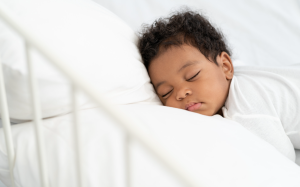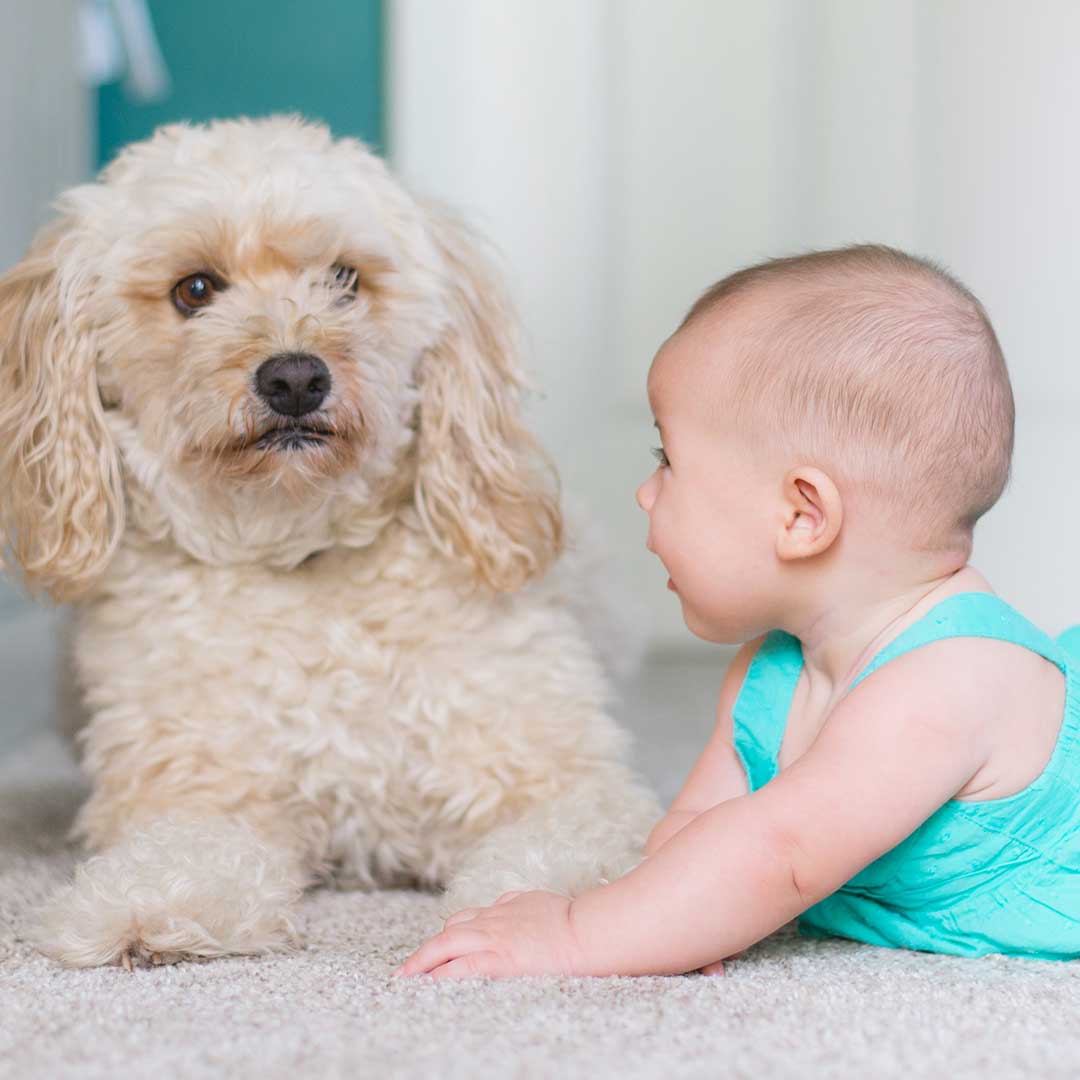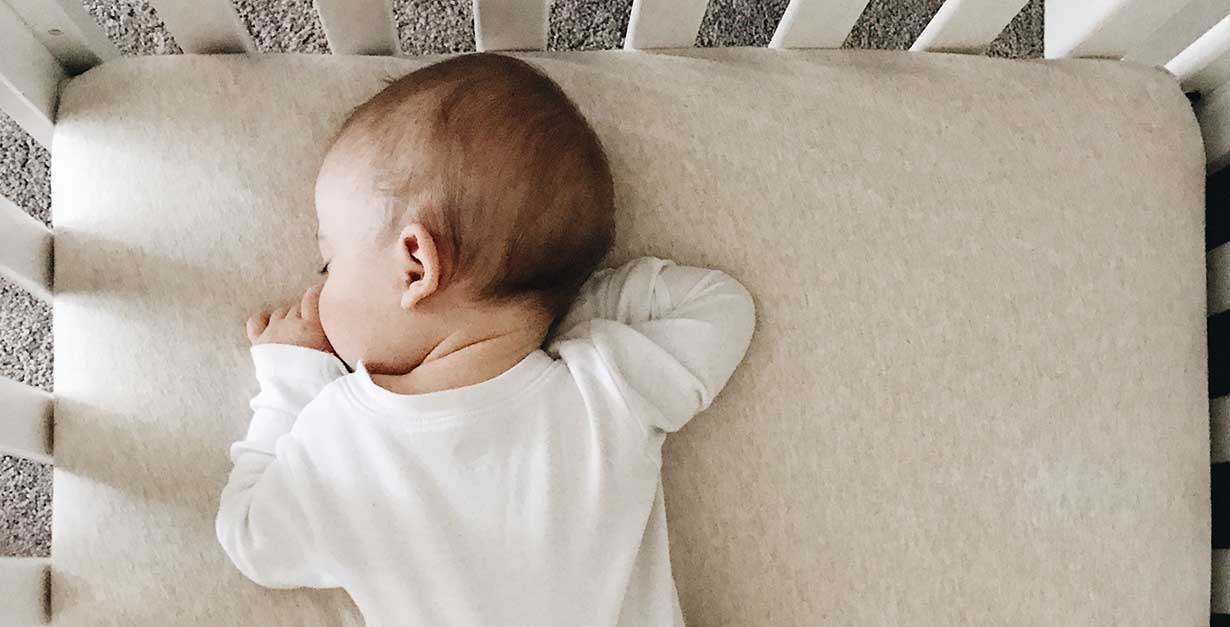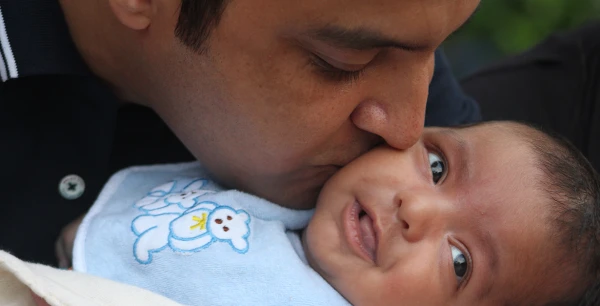At a Glance: Sleep Training Basics
- Age to Start: Usually 4–6 months, when babies are developmentally ready.
- Popular Methods:
- Gentlest approach: Sleep Lady Shuffle
- Gentle approaches: Chair Method, Bedtime Fading, Pick Up/Put Down.
- Others: Cry It Out (CIO), Ferber (timed checks).
- Benefits: Improved sleep for baby and family, healthier routines, reduced stress.
- Common Concerns: Emotional stress, guilt, inconsistency, night wakings
What is Sleep Training
Sleep training or sleep training services are ways to help your baby learn the essential skill of falling asleep independently. It’s about teaching your baby how to transition from being awake to asleep without relying on outside assistance like rocking, nursing, or patting. While every family and child is unique, sleep training typically involves setting up a consistent bedtime routine, creating a conducive sleep environment, and gently guiding your baby to self-soothe when they wake during the night.
Here’s a closer look at sleep training:
- Definition of Sleep Training: Sleep training refers to the techniques parents use to teach their baby to fall asleep on their own and stay asleep through the night. This might involve gradually reducing interventions that help them fall asleep, like rocking or nursing.
- Sleep Training for Babies: For young babies, this process starts by building foundational habits like consistent sleep routines and environments, sometimes called “sleep shaping.” As the baby grows, parents can transition to more structured sleep training methods tailored to their baby’s development.
- Baby-Led Sleep Coaching: This gentle approach emphasizes supporting the baby as they learn to sleep independently, without forcing them or causing excessive distress. It includes techniques like the Sleep Lady Shuffle, gradually reducing parental involvement at bedtime.
- Why Sleep Training Matters: Helping a baby develop self-soothing skills not only supports better sleep for the child but also for the entire family. Babies learn to manage small frustrations and transitions, which builds confidence and security.
Sleep training does not mean abandoning your baby to cry alone. Instead, it’s about teaching, guiding, and providing gentle encouragement to help them master the skill of sleep in a way that aligns with your family’s values and your baby’s needs.
What Sleep Training Isn’t
Sleep training often gets misunderstood, so let’s clear up a few things:
- It’s Not About Ending Night Feeds (Unless You’re Ready): Sleep training doesn’t mean stopping nighttime feeds altogether. Night weaning is a separate process and should only happen when your baby is developmentally ready and you feel it’s the right time.
- It’s Not About Letting Your Baby Cry Alone All Night: Gentle sleep training methods, like the Sleep Lady Shuffle, are designed to minimize tears. You can stay close, offer comfort, and support your baby as they learn this new skill.
- It Doesn’t Cause Emotional Harm: Research has shown that sleep training, when done with love and responsiveness, does not harm attachment or emotional health. In fact, it often helps babies—and parents—feel more rested and secure. It may not work with less gentle approaches.
Benefits of Sleep Training
The benefits of sleep training your baby are profound for both the child and the family. Here’s why sleep training is worth considering:
1. Promotes Better Sleep for the Baby
Babies learn the skill of self-soothing and transitioning between sleep cycles, leading to longer and more restful sleep periods. Good sleep is essential for their growth, brain development, and overall well-being.
2. Supports Parental Well-being
Parents who sleep train their babies often experience better sleep themselves. A well-rested parent is more patient, alert, and emotionally available, which positively impacts family dynamics and parenting quality.
3. Enhances Family Relationships
When babies sleep better, it allows parents more time for their relationships with each other and older siblings. A healthier parental bond is crucial for creating a harmonious home environment.
4. Encourages Emotional Growth
Through gentle methods like the Sleep Lady Shuffle, babies learn to handle small frustrations with the reassurance of their parents. This fosters a sense of security and emotional resilience.
5. Reduces Stress for Both Baby and Parents
With consistent sleep habits, families avoid the stress of nightly struggles. Establishing a predictable bedtime routine provides a calming structure that benefits everyone.
6. Long-Term Benefits
Children who develop healthy sleep habits early are more likely to maintain them into toddlerhood and beyond. This contributes to better emotional regulation, learning, and overall health.
Sleep Training Readiness
1. Developmental Readiness (Around 4–6 Months)
- Babies are typically ready for more structured sleep training between 4 to 6 months of age, after their brain and central nervous system have matured. This is when they begin to consolidate nighttime sleep and show longer stretches without needing a feed.
- Before this, sleep shaping is recommended, focusing on creating consistent routines and a soothing sleep environment rather than structured sleep training.
2. After the 4-Month Sleep Regression
- Sleep coaching is often more effective once a baby has moved past the 4-month sleep regression. At this point, their sleep patterns stabilize, and they are better equipped to learn self-soothing.
3. Signs Your Baby Is Ready
Look for the following indicators:
- Your baby can go longer stretches without feeding at night.
- They have established some daytime and nighttime sleep patterns.
- They show self-soothing attempts, like sucking on their hands or rolling.
4. Ideal Conditions for Parents
- Choose a time when you can dedicate at least 2–3 weeks without major disruptions like travel or changes in routine.
- Ensure both parents are aligned on the plan and ready to follow through consistently.
Why Not Earlier?
Starting too early, such as before 3–4 months, can be counterproductive since babies are not developmentally ready to self-soothe. They rely on parents for regulating their emotions and sleep cycles during this stage.
Earliest Age to Start
- The earliest recommended age for structured sleep training is around 4 months, after the baby has passed the 4-month sleep regression. At this stage, babies begin consolidating sleep and are more neurologically ready to self-soothe.
Why Not Before 4 Months?
- Babies younger than 4 months are not developmentally ready for sleep training. Their sleep patterns are still fluid, and they lack the self-soothing skills needed for structured methods. Starting too early can lead to more frustration for both parents and the baby.
Sleep Shaping Before 4 Months
- Instead of formal sleep training, focus on sleep shaping during the first few months. This includes:
- Establishing a consistent bedtime routine.
- Differentiating between day and night.
- Encouraging a soothing sleep environment.
Indicators Your Baby Is Ready
Your baby may be ready for sleep training if:
- They are at least 4½ months old.
- You notice predictable patterns in their daily schedule, such as consistent wake-up and bedtime routines.
- They can sleep for longer stretches at night.
Is 3 Months Too Early?
Yes, 3 months is typically too early for sleep training. At this age, focus on responding to your baby’s needs and gently guiding them toward better sleep habits.
The Sweet Spot
While some families start as early as 4 months I recommend waiting until around 6 months for optimal results. By this age, the baby’s sleep patterns are more stable, and they are better equipped to learn self-soothing.

1. Before Starting Sleep Training, Get the Green Light
Need to night wean first?
Read: Night Weaning After Six Months: How to Gently End Night Feedings
2. Keep a Sleep and Feeding Log
Chances are, your short-term memory isn’t quite up to par as a result of sleep deprivation: Your days and nights are going by in a blur. Before starting sleep training, you’ll need to have a clear picture of what’s happening at bedtime and during the night, what’s working, what’s not, how your baby is responding, etc. Keep track by writing it all down for a few days or a week. Having a record in writing, instead of relying on scrambled mental notes in your sleep-deprived brain, will give you a more accurate picture of your child’s patterns and your own responses.
Some parents find it easiest to keep a log for scribbling on right next to their child’s bed. Look for signs of his natural bedtime window. Jot down when and how often he wakes up during the night. Note what you did to get him back to sleep, whether you rocked him, nursed him, sang to him, or brought him into your bed.
You can also try the free Sleep Lady Gentle Sleep App
Once you start sleep training, continue the log. Tracking your child’s sleep patterns will help you figure out what’s working, what’s not, and what tactics you should tweak.
3. Figure Out an Ideal Bedtime
This is the period of time during which she’ll show signs that she’s ready to sleep—yawning, rubbing her eyes, twisting her hair, fussing. Often parents miss a child’s sleepy cues—especially in the evening, because it’s such a busy time of day. Before starting sleep training, pay extra attention to how your child behaves between 6:00 p.m. and 8:00 p.m.
As soon as she begins acting drowsy, you’ll know that that’s her natural bedtime. You should be putting her down at that time each evening going forward. Make bedtime adjustments gradually, 30 minutes or so at a time. Sometimes with a child under three, you can make the changes quickly if you learn to recognize her natural patterns. For instance, if your 20-month-old is used to going to bed at 10:00 p.m., but you can see that she’s drowsy at 7:30 p.m., you don’t need to spend days gradually adjusting. Just put her to bed at 7:30 p.m. and make sure you do so again the next night and the night after that.
Want to know more about your baby’s ideal schedule?
Read: Sample Schedules: Sleep and Naps From 6 Months to Preschool
If you have trouble picking up on your child’s drowsy signals, you can pinpoint a reasonable bedtime for her simply by looking at when she normally wakes up and factoring in how much sleep she should be getting based on her age. Let’s say you have a 2-year-old who tends to wake up by 7:00 a.m. every morning. The average 2-year-old needs 11 hours of sleep at night, so that would mean that your child needs to have gone through her entire bedtime routine and be sound asleep by 8:00 p.m.
4. Create a Relaxing Bedtime Routine
All children, from newborns on up to school-age kids, need a set of comforting and predictable rituals to help them prepare physically and psychologically for sleep. These activities should be calm, quiet ones, like reading, story-telling, or lullabies; bedtime is not the time for tickling, wrestling, scary stories, or TV shows, or anything else that’s stimulating.
Because you’re preparing your little one to be separated from you for the night, the tone should be serene and reassuring. If you establish this routine before starting sleep training, your baby will know this is her cue to get into “bedtime mode”.
For babies over 6 months old, I encourage attachment to a “lovey,” a favorite stuffed animal or small blanket that he can use to comfort himself when he wakes during the night. And with the exception of baths and tooth-brushing, the bedtime routine should take place in the child’s nursery or bedroom.
Here are some activities that work well as part of a bedtime routine, depending on a child’s age. Three from this list is plenty:
- bath
- put on pajamas
- brush teeth
- go potty
- massage
- swaddle
- read books
- sing a short song
- play a quiet game
- share three things about your day
- tell a story
- listen to music
- baby or toddler yoga
- small sippy cup of water with books
- bottle or nursing
- prayers, blessings, or sending kisses and love to others
- plenty of hugs and kisses
How drowsy should your baby be at bedtime?
Read: Drowsy But Awake: The Cornerstone of Successful Sleep Training
5. Install Room-Darkening shades
If your child’s bedroom gets too much light, he wakes up very early, or has trouble napping; but leave a dim night-light on so that you can see him when you check on him. He’ll probably sleep more soundly with that little bit of light too, although some children do better in total darkness.
Get the sleep help your family need with one-on-one help with a certified, trained Gentle Sleep Coach.
6. Consider White Noise
If your child’s room isn’t very soundproof and you have a barking dog, loud neighbors, older siblings, live on a busy street, etc. Children do learn to sleep through routine household sounds — and they should to a large extent — but some places are just really loud and some kids are really sensitive. White noise is a constant sound that helps to block out noise. When you’re starting sleep training, buy a white noise machine, or try turning on a fan. I discourage using music to mask noise; kids can get too dependent on it — meaning they’ll want someone to come in and restart their music every time they wake up.
7. Decide About the Pacifier
Research shows that pacifier use during sleep time may reduce the risk of sudden infant death syndrome, or SIDS, among babies who are 6 months or younger. Medical advice on pacifiers has changed frequently over the years, and it may well change again. Please check with your doctor, and check in again as your baby gets a little older.
If you’re breast- feeding, wait four to six weeks until nursing is well established before you introduce the pacifier. Bottle-fed babies can start earlier. Even if you use the pacifier when the baby sleeps, you may choose not to use it all the time when she’s awake and fussy. You can reconsider how and when you want her to continue with the pacifier when she gets to be about 6 months old.
If your baby is over 6 months old and is using a pacifier, you may need to decide if it is a problem that needs addressing as you’re starting sleep training. Ask yourself:
- Can she grip and maneuver it into her mouth on her own (most babies can do this by 8 months old)?
- Are you making multiple trips to her crib to re-plug the pacifier?
- Have you spoken to your pediatrician about weaning your child off the pacifier?
You have two choices:
Eliminate the pacifier: If you find yourself having to repeatedly re-plug your child’s pacifier and your pediatrician has signed off on getting rid of it, then you will have to pick the big night. Unfortunately, you can’t really “wean” a child from the pacifier. It’s either in the baby’s mouth or it isn’t. Pick the first night you will put your child to bed without it. You’ll have to do some extra soothing for the first few nights.
Keep the pacifier: If you decide to keep the pacifier, then put several of them in your child’s bed or crib. Instead of re-plugging the pacifier, start by putting the pacifier in their hand and then eventually pointing to it or directing your child towards the pacifier. In other words, slowly reduce your efforts to put the pacifier in their mouth for them and encourage them to find it and put it in themselves….even if this means they have to wake up more to find it.
Ditching the pacifier? Try a lovey!
Read: The Lovey — Your Child’s First Best Friend

8. Get Your Child Used to a 6:00 a.m. to 7:30 a.m Wake-up
This applies to babies over 5 months of age who are waking up at all different times, sometimes as late as 8:30 or 9:30 a.m., which then throws off the entire day and confuses their internal clocks. Start waking your baby by 7:30 a.m. about five days before starting sleep training.
9. Make Sure Everyone is On Board
If you’re starting sleep training, it’s vital that your spouse, partner, nanny, and anyone else who frequently cares for your child understands each aspect of the sleep coaching plan, why it’s important, and is willing to follow through. This is key to maintaining the consistency that’s so vital to sleep success.
10. Pick a realistic start date
Choose a block of time, ideally about three weeks, during which you don’t expect any major disruptions or changes in your household, including trips, moving, or the arrival of a new baby. Some families decide to start sleep coaching during a summer or winter vacation so the grown-ups won’t have to juggle sleep training with work. That’s a good strategy, but be careful to keep your child’s schedule consistent even if yours is not. For instance, don’t introduce a nice, sensible 7:30 p.m. bedtime the very week you plan to let her stay up until 10:00 with the grandparents on Christmas Eve, or are going to have a horde of entertaining young cousins camping out in your back- yard over the Fourth of July.
Proper Prior Planning….
With a little work ahead of time before starting sleep training, the task will be much smoother
FAQs
Q: Do You Have to Sleep Train?
Kim’s Answer: No, sleep training isn’t something you have to do unless your current routine isn’t working for your family. If your baby is sleeping well and everyone is rested, there’s no reason to change anything. But if sleepless nights are leaving you exhausted or your baby is struggling with sleep, sleep training can be a wonderful way to help your family find balance. It’s about creating healthy sleep habits that work for both your baby and you—not about following rigid rules. Remember, every family is different, and the goal is always to find what feels right for yours.
Q: When Can You Start Sleep Training?
Kim’s Answer: Most babies are ready for gentle sleep training somewhere between 4 and 6 months of age. At this stage, they’re developmentally ready to start learning the skill of falling asleep independently. But remember, every baby is unique. Look for signs like predictable sleep patterns and stretches of longer sleep at night. Before 4 months, I recommend focusing on sleep shaping—laying the foundation for healthy sleep with soothing routines and a consistent sleep environment.
Q: Can You Sleep Train Twins?
Kim’s Answer: Yes, you can sleep train twins—but with intention, flexibility, and a solid plan. It’s important to respect each baby’s individual temperament and readiness. Some families coach twins together in the same room, while others separate them temporarily for naps or the first few nights. With tools like white noise, a consistent routine, and the right method (like the Sleep Lady Shuffle), twins can learn to sleep well—even in the same room.
Q: Is Sleep Training Bad?
Kim’s Answer: No, sleep training is not harmful when done gently and with love. Research shows that it doesn’t cause emotional or developmental harm when you choose an approach that aligns with your parenting style and your baby’s temperament. My Sleep Lady Shuffle is designed to minimize tears and maintain your baby’s sense of security. Sleep training isn’t about shutting a door and walking away—it’s about teaching your baby an important skill while being there to support and reassure them.
Q: How Early Can You Sleep Train a Baby?
Kim’s Answer: While you can start introducing gentle sleep habits from the very beginning, formal sleep training is best saved for after 4 months of age. Before then, babies are still adjusting to life outside the womb, and their sleep cycles and feeding needs are not yet regulated. In the early weeks, focus on creating a calming bedtime routine, establishing the difference between day and night, and responding to your baby’s needs. When they’re ready, sleep training will feel more natural for both of you.
Q: What is the 5-10-15 Method?
Kim’s Answer: The 5-10-15 method is a sleep training approach where parents let their baby cry for increasing intervals of time—starting with 5 minutes, then 10, and then 15—before offering brief comfort. While this method works for some families, it’s not for everyone. I encourage a gentler approach, like my Sleep Lady Shuffle, where you stay close to your baby and gradually reduce your presence as they learn to fall asleep. This allows for teaching sleep skills while maintaining a sense of connection and support.
Citations
- Holliday-Bell, Angela . “A Parent’s Guide to Sleep Training Infants and Toddlers – UChicago Medicine.” UChicago Medicine, 24 May 2023, www.uchicagomedicine.org/forefront/pediatrics-articles/2023/may/sleep-training-in-infants-and-toddlers.
- American Academy of Pediatrics, “Getting Your Baby to Sleep,” HealthyChildren.org, 2022, https://www.healthychildren.org/English/ages-stages/baby/sleep/Pages/Getting-Your-Baby-to-Sleep.aspx.
- Cleveland Clinic. “When and How to Sleep Train Your Baby.” Cleveland Clinic, May 3, 2021. https://health.clevelandclinic.org/when-and-how-to-sleep-train-your-baby.
- F. Drozd, Turid Skjerve Leksbø, Hege Therese Størksen, Cathrine Wilhelmsen and K. Slinning. “An overview of reviews for preventing and treating sleep problems in infants.” Acta Paediatrica, 111 (2022): 2071 – 2076. https://doi.org/10.1111/apa.16475.
- Park, J., Kim, S.Y. & Lee, K. Effectiveness of behavioral sleep interventions on children’s and mothers’ sleep quality and maternal depression: a systematic review and meta-analysis. Sci Rep 12, 4172 (2022). https://doi.org/10.1038/s41598-022-07762-8
- A. Shaughnessy. “Getting an Infant to Sleep: Graduated Extinction and Sleep Fading are Effective..” American family physician, 94 9 (2016): 750 .
- L. Loutzenhiser, J. Hoffman and J. Beatch. “Parental perceptions of the effectiveness of graduated extinction in reducing infant night-wakings.” Journal of Reproductive and Infant Psychology, 32 (2014): 282 – 291. https://doi.org/10.1080/02646838.2014.910864.
- J. Mindell, B. Kuhn, D. Lewin, L. Meltzer and A. Sadeh. “Behavioral treatment of bedtime problems and night wakings in infants and young children..” Sleep, 29 10 (2006): 1263-76 . https://doi.org/10.1093/SLEEP/29.10.1263.
- Nationwide Children’s Hospital. “Healthy Sleep Habits for Infants and Toddlers.” Nationwide Children’s Hospital, 2011. https://www.nationwidechildrens.org/family-resources-education/health-wellness-and-safety-resources/helping-hands/healthy-sleep-habits-for-infants-and-toddlers.
- Nicholson, Laura, Amy M. Bohnert, and Stephanie J. Crowley. 2022. “A Developmental Perspective on Sleep Consistency: Preschool Age through Emerging Adulthood.” Behavioral Sleep Medicine 21 (1): 97–116. doi:10.1080/15402002.2021.2024192.




